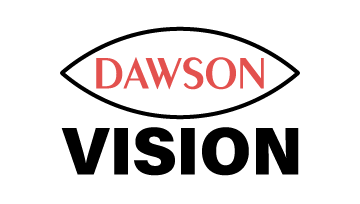
Our bodies naturally undergo changes as we age, and our eyes are no exception. While some vision changes are a normal part of aging, others may indicate underlying health issues that require attention. Understanding what to expect as you age can help you maintain good eye health and know when to seek professional advice.
Our eye care team at Dawson Vision explains how your vision naturally changes with age and when you should have concerns.
Normal Age-Related Vision Changes
Several vision changes commonly occur as we age. These are generally part of the normal aging process and do not necessarily indicate a serious problem.
Presbyopia
Presbyopia is perhaps the most well-known age-related vision change. It typically begins in your early to mid-40s, causing difficulty focusing on close objects. This occurs because the eye's lens becomes less flexible over time, making it harder to change focus from distant to near objects. Many people with presbyopia find they need reading glasses or bifocals to see clearly up close.
Decreased Contrast Sensitivity
As we age, our ability to distinguish between different shades of colors may diminish. This change, known as decreased contrast sensitivity, can make it harder to differentiate between similar colors or see well in low-light conditions. While this change is typically not a cause for concern, it can affect daily activities like night driving.
Dry Eyes
Dry eyes are another common issue among older adults. Our tear production decreases as we age, leading to dryness, irritation, and discomfort. Although dry eyes can be bothersome, they are usually manageable with treatments recommended by your eye care professional.
When to Be Concerned: Age-Related Eye Conditions
While many vision changes are a normal part of aging, some symptoms may indicate more serious eye conditions that require medical attention. Knowing the signs of these conditions can help you seek timely treatment and prevent further vision loss.
Cataracts
Cataracts are a clouding of the eye’s lens. Cataracts lead to blurry vision, glare sensitivity, and difficulty seeing at night. While cataracts are common in older adults and you can treat them effectively with surgery, you should not ignore them. See your eye doctor if you notice any significant changes in your vision, such as increased glare or foggy vision.
Age-Related Macular Degeneration (AMD)
AMD is a leading cause of vision loss in people over 60. It affects the macula, the part of the retina responsible for central vision. Early signs of AMD include blurred or distorted vision and difficulty recognizing faces. Since AMD can progress rapidly, early detection and treatment are crucial to preserving vision.
Glaucoma
Glaucoma is a group of eye diseases that can damage the optic nerve, often due to increased pressure inside the eye. It develops slowly and often has no symptoms until significant vision loss occurs. Regular eye exams are vital for early detection and management of glaucoma. Untreated glaucoma can lead to permanent blindness.
Diabetic Retinopathy
Diabetic retinopathy is a complication of diabetes that affects the blood vessels in the retina. Symptoms include blurred vision, floaters, and difficulty seeing at night. Because diabetic retinopathy can progress without obvious symptoms, regular eye exams are essential for individuals with diabetes to detect and manage this condition early.
Maintaining Eye Health as You Age
Regular eye exams are the cornerstone of maintaining eye health as you age. They allow for the early detection of potential issues and the timely treatment of any conditions that may arise. A healthy lifestyle, including a balanced diet, regular exercise, and proper eye protection, can help preserve your vision.
Seek medical attention if you notice any sudden changes in your vision, such as flashes of light, vision loss, or an increase in floaters. These could be signs of a serious eye condition that requires prompt treatment.
Aging may bring changes to your vision. However, with proper care and attention, you can maintain healthy eyes and clear vision for years to come. Visit Dawson Vision to request your regular eye exam and keep your vision in top shape as you age.
